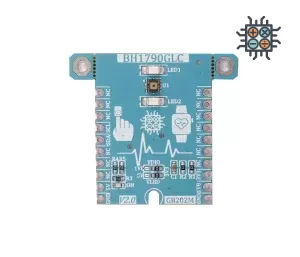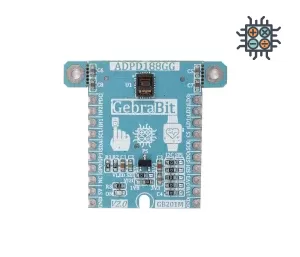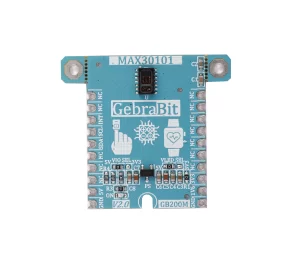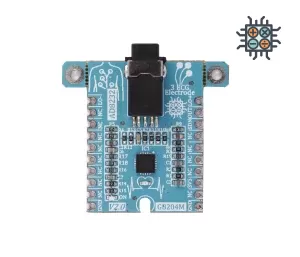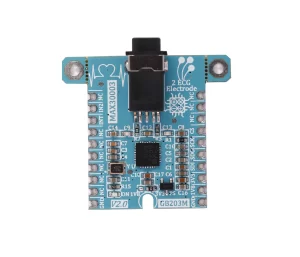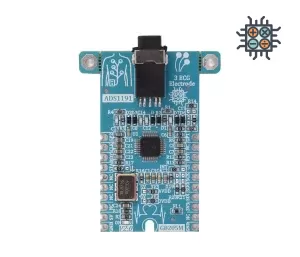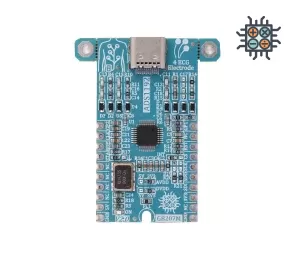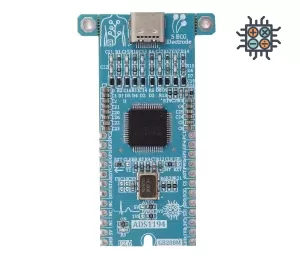medical
sensors
Medical engineering is an interdisciplinary field that combines the principles of engineering and medicine to design, develop, and evaluate medical devices, equipment, and systems that improve healthcare delivery and patient outcomes. The goal of medical engineering is to provide innovative solutions to medical problems and improve patient care by integrating engineering and medical knowledge and expertise.
Some examples of medical engineering include the design and development of:
- Artificial organs, such as pacemakers and artificial heart valves
- Medical imaging equipment, such as X-rays, CT scans, and MRI machines
- Surgical instruments, such as robotic-assisted surgical systems
- Rehabilitation devices, such as prosthetics and orthotics
- Telemedicine systems, which allow for remote medical consultations and diagnoses
Medical engineers often work closely with healthcare professionals, such as doctors, nurses, and physical therapists, to understand their needs and create products that meet their requirements. They also collaborate with materials scientists, computer scientists, and other engineers to develop and refine new technologies.
Medical sensors are specialized sensors designed for use in the medical field. They are used to measure various physiological and biometric signals, such as heart rate, blood pressure, oxygen saturation, and temperature. These sensors play an important role in diagnosing and monitoring various medical conditions and are used in a wide range of medical applications, such as wearable devices, implantable devices, and medical imaging systems.
There are several types of medical sensors, including:
- ECG (electrocardiogram) sensors, which measure the electrical activity of the heart
- Blood pressure sensors, which measure the pressure of blood in the arteries
- Pulse oximetry sensors, which measure the
- oxygen saturation of the blood
- Temperature sensors, which measure the body temperature
- Respiratory sensors, which measure breathing rate and volume
- Glucometers, which measure the blood glucose levels
- EEG (electroencephalogram) sensors, which measure the electrical activity of the brain
Medical sensors are designed to be highly accurate, sensitive, and reliable, as they are used to make critical decisions in the medical field. They can provide real-time information about a patient’s health, enabling healthcare providers to monitor patients more effectively and respond quickly in the event of a medical emergency.
Gebrabit engineering team offers biomedical sensors, which are easier to modularize than other sensors and are usually more widely used, in the form of modules and the following ready-made kits to its customers.
The most important goal of GebraBit is education and innovation, in this regard, in addition to using ready-made modules for medical sensors, you can take advantage of the useful materials included in the Encyclopedia and projects section.
We continue the innovation of our BioMedical products with our latest offerings.
Medical Sensors
This sensors are ready to use as well as customize easily.

EEG
Measures electrical activity in the brain

ECG
Collecte electrical signals of the heart

EMG
measures muscle response or electrical activity

Heart Rate
Measures the heart beats per minute

Temperature
Measures body temperature

Puls Oximetere
Measure accurate body parameters

Body Composition
Percentage of fat, bone, and muscle
Frequently Asked Questions
Is bioelectricity the same as electricity?
Bioelectricity and electricity are not exactly the same, although they are closely related. Electricity refers to the flow of electric charge, typically in the form of electrons, through a conductor such as a wire. In contrast, bioelectricity refers to the electrical phenomena that occur within living organisms.
Living cells generate bioelectricity through the movement of charged ions across their membranes. This movement of ions creates an electrical potential, or voltage, across the membrane. In some cells, such as neurons and muscle cells, this electrical potential can generate action potentials, which are rapid changes in voltage that allow for communication and control of bodily functions.
While bioelectricity is a type of electricity, it differs from the electricity that is generated by machines and used in electronics. Bioelectricity is much weaker than the electricity used in machines and typically cannot be directly harnessed for practical use. However, researchers are exploring ways to use bioelectricity for therapeutic purposes, such as through deep brain stimulation (DBS) and other techniques that involve modulating the electrical activity of the body’s cells and tissues.
View related articles
What are the MOST IMPORTANT types of biosignals?
The most important types of biosignals depend on the specific application or medical condition being diagnosed or monitored. However, some of the most commonly used and clinically relevant biosignals include:
- Electrocardiogram (ECG or EKG): measures the electrical activity of the heart and is used to diagnose and monitor heart conditions such as arrhythmias, heart attacks, and heart failure.
- Electroencephalogram (EEG): measures the electrical activity of the brain and is used to diagnose and monitor neurological conditions such as epilepsy, sleep disorders, and brain injuries.
- Electromyogram (EMG): measures the electrical activity of muscles and is used to diagnose and monitor muscle and nerve disorders such as muscular dystrophy, myasthenia gravis, and carpal tunnel syndrome.
- Blood glucose level: measures the concentration of glucose in the blood and is used to monitor and diagnose diabetes.
- Blood pressure: measures the force of blood against the walls of arteries and is used to monitor cardiovascular health and diagnose hypertension.
- Blood oxygen saturation (SpO2): measures the amount of oxygen in the blood and is used to monitor respiratory and cardiovascular function.
- Respiratory rate (RR): measures the rate and depth of breathing and is used to monitor respiratory function.
- Body temperature: measures the internal body temperature and is used to diagnose fever and other conditions.
These biosignals provide critical information about the physiological state of the body and are widely used in medical diagnosis and monitoring, as well as in research and development of new medical technologies and treatments.
View related articles
What is the origin of bioelectric signals?
Bioelectric signals originate from the electrical activity generated by cells in the body, particularly excitable cells such as neurons and muscle cells. These cells use electrical and chemical signals to communicate with each other and to transmit information throughout the body. The movement of ions across the cell membrane creates differences in charge and potential that can be measured as electrical signals. The synchronized firing of neurons in the brain, for example, creates complex patterns of electrical activity that can be detected and analyzed using techniques such as electroencephalography (EEG). Similarly, the activation of muscles generates electrical signals that can be measured using electromyography (EMG). Other bioelectric signals, such as the electrical activity of the heart, result from the coordinated activity of many cells working together. Overall, bioelectric signals are an important aspect of the body’s communication and control systems, and provide valuable information for diagnostic and therapeutic purposes in medicine and other fields.
View related articles
How bio electricity is produced?
Bioelectricity is produced by the movement of charged particles, or ions, across the cell membrane in excitable cells such as neurons and muscle cells. These cells maintain a voltage difference, or membrane potential, between the inside and outside of the cell through the selective movement of ions through ion channels in the membrane. When a neuron or muscle cell receives a stimulus, it can cause a sudden and rapid change in membrane potential, resulting in the generation of an action potential – a brief electrical signal that can travel along the length of the cell. These action potentials can be detected as bioelectric signals using electrodes placed on the skin or implanted inside the body.
In addition to the activity of individual cells, the coordinated activity of many cells can also generate bioelectric signals. For example, the heart contains specialized cells that generate electrical impulses to coordinate the contraction of the heart muscle, resulting in the heartbeat. This electrical activity can be measured using an electrocardiogram (ECG). Similarly, the synchronized firing of neurons in the brain generates electrical signals that can be detected using an electroencephalogram (EEG).
Overall, bioelectricity is an important aspect of cellular communication and control in the body, and provides valuable information for diagnostic and therapeutic purposes in medicine and other fields.
View related articles
What is meant by bio signal?
Bio signals, also known as biosignals or biological signals, refer to electrical, chemical, or mechanical signals that are generated by biological processes in the body. These signals can provide important information about the functioning of various physiological systems, such as the nervous system, cardiovascular system, and musculoskeletal system. Examples of bio signals include the electrical signals generated by neurons in the brain and muscles, the chemical signals generated by hormones and neurotransmitters, and the mechanical signals generated by the heart and blood vessels.
Bio signals can be measured and analyzed using a variety of techniques, such as electroencephalography (EEG), electromyography (EMG), electrocardiography (ECG), and blood pressure monitoring. These measurements can provide valuable information for diagnostic and therapeutic purposes in medicine and other fields, such as sports science, psychology, and human-computer interaction.
View related articles
Latest products
-
GebraBit BH1790GLCRated 0 out of 5
-
GebraBit ADPD188GGRated 0 out of 5
-
GebraBit MAX30101Rated 0 out of 5
-
GebraBit AD8232Rated 0 out of 5
-
GebraBit MAX30003Rated 0 out of 5
-
GebraBit ADS1191Rated 0 out of 5
-
GebraBit ADS1192Rated 0 out of 5
-
GebraBit ADS1194Rated 0 out of 5

